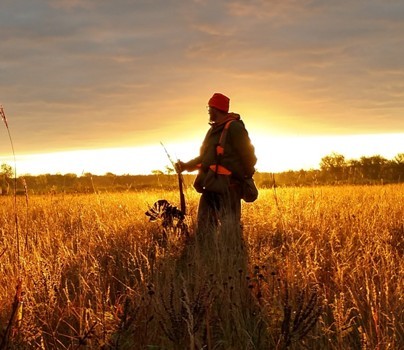The U.S. Fish and Wildlife Service are celebrating Glacial Ridge National Wildlife Refuge (GRNWR), which was established 15 years ago this week to preserve and restore the imperiled tallgrass prairie ecosystem in Minnesota. Take a moment to learn about this special place and how we work collaboratively to protect America’s precious prairie and wetlands.
Prairies and wetlands are important. Not just for the wildlife that depend on them for food, water and shelter, but also for people. They store carbon, anchor rich nutrients and help filter the water supply. While North American tallgrass ecosystems have declined by more than 99% since the 1800s, the GRNWR been working hard to bring them back. Today, Glacial Ridge National Wildlife Refuge protects more than 23,000 acres of habitat, including a combination of native tallgrass prairie, reconstructed prairie, as well as both natural and restored wetlands. This prairie ecosystem is dominated by native grasses that are often three to six feet tall and contain an immense variety of grasses and wildflowers, but the most dominant species defining the prairie are big bluestem, Indian grass and little bluestem.
Glacial Ridge National Wildlife Refuge lies in the footprint of its namesake, ancient glacial Lake Agassiz, which formed 9,000 to 12,000 years ago. The wave action of this lake created beach ridges that are still an important corridor that traverses over 400 miles across west and northwest Minnesota from Ortonville to Baudette. The beach ridges run from northeast to southwest with a hill made from glacial sediment, called a moraine, located on the east side of the refuge. This moraine helped form lakes which in turn created what’s known as a fire shield, which stopped the frequent fires that occurred throughout the beach ridge landscape and allowed forests to develop where fire was rare. Grasslands developed in the fire-prone beach ridge area. Today, the refuge is bordered on its eastern edge by lakes and hardwood forests and is adjacent to the Red River Valley on the western edge, which was historically occupied by tallgrass prairie.
Looking out across the peaceful prairie in rural Minnesota, visitors may not realize that they are benefiting from the nation’s largest prairie-wetland restoration effort. Created in 2004 with an initial transfer of 1,993 acres of restored tallgrass prairie from The Nature Conservancy, it has grown to be a key part of a patchwork of preserves and wildlife areas in the region that includes some of Minnesota’s best remaining prairies. Over the years, The Nature Conservancy transferred more than 20,000 acres of habitat toward what is now Glacial Ridge National Wildlife Refuge. This monumental restoration effort, called the Glacial Ridge Project, was accomplished with the help of land stewards, partners, volunteers and U.S. Department of Agriculture funding through the Natural Resource Conservation Service.
People visit Glacial Ridge National Wildlife Refuge for the spectacular wildlife and prairie wildflower viewing opportunities, photography and recreational hunting. Whether on a prairie hike or from the road, wildlife watchers should look and listen for sandhill cranes, upland sandpipers, bobolinks, a variety of prairie sparrows, as well as mammals like moose and black bear. Hunting opportunities include deer, waterfowl, upland game birds, wild turkey, and small game.
The diverse refuge habitats are home to imperiled species like the federally threatened western prairie fringed orchid and state endangered Henslow’s sparrow. Many other noteworthy bird species have benefited from this large-scale habitat restoration, including sharp-tailed sparrows, marbled godwits, short-eared owls, upland sandpipers and Wilson’s phalaropes. Restored wetlands provide both nesting and migratory stopover habitat for ducks, geese, swans and a diversity of shorebird species.
Another conservation success story is the greater prairie-chicken. Historically, these members of the grouse family were abundant in midwestern tallgrass prairies, but they are picky about their habitat and don’t adjust well to agriculture, roads or powerlines. By the 1930s they were nearly extinct. Refuge staff and partners have seen prairie-chickens and other grassland species return to the restored prairie habitat. Today, you can come out to the refuge and catch a glimpse for yourself through one of the public viewing blinds. Every spring birders come out to witness the iconic courtship rituals that give these birds their nickname – boomers. This experience is so popular that advanced registration to needed to reserve a blind.
The GRNWR proud to conserve tallgrass prairie and celebrate 15 years of this enduring restoration work with the local community, their partners and visitors.
Learn more about Glacial Ridge National Wildlife Refuge and plan your visit today!




